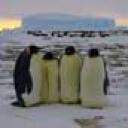Yahoo Answers is shutting down on May 4th, 2021 (Eastern Time) and the Yahoo Answers website is now in read-only mode. There will be no changes to other Yahoo properties or services, or your Yahoo account. You can find more information about the Yahoo Answers shutdown and how to download your data on this help page.
Trending News
Was the "Little Ice Age" a global event?
Kano and I were having a sidebar discussion on this. Graphicconception interjected with a remark that leads me to believe that he thinks it was a global event when he said "Being a Global Event is not relevant. What matters is did it reduce the global average temperature.".
I will now demonstrate the fallacy in Graphicconceptions comment by providing this analogy:
When you close off a room of your house and increase the amount of cooler air entering into it (as in you added a window AC unit to the room) you will have effectively reduced the average temperature of the house, but the additional cooling is localized and does not impact the entire house, other than the average temperature of the house.
This fairly well describes what happened during the LIA. Large regions of the planet were impacted by the LIA. Almost all of the cooling occurred in the northern hemisphere and not all of the regions were cooling at the same time. The cooling of these regions could have reduced the average global temperatures, but the cooling was not planet wide. Graphicconception has no conception of averaging. You can raise the temperature of half of the planet by 1C and lower the temperature of the other half of the planet by 1C and still maintain the same average global temperature. There is the fallacy in Graphicconception's logic. A localized cooling can alter the average global temperature without there being a global cooling.
My question is if anyone here has the studied and verified evidence that the LIA was truly a global event, or was it just regional cooling that had an influence of the global average temperatures?
@Mark G, your own link disputes your claim.
"While there is evidence that many other regions outside Europe exhibited periods of cooler conditions, expanded glaciation, and significantly altered climate conditions, the timing and nature of these variations are highly variable from region to region, and the notion of the Little Ice Age as a globally synchronous cold period has all but been dismissed."
@JimZ, I see that you suffer the same misunderstanding of averaging that Graphicconception does. I am not a genius, but you have further proved that you are far removed from being a genius. Think about what you just said and then get back to us. The MWP was also regional and not global, regardless if they did impact the average global temperature. You still do nit understand this?
@Graphicconception, you are stating your opinions and not giving any evidence that would support the LIA being a global event. The LIA did not reveal all regions of the planet cooling at the same time, even if it did influence the global average temperature. The claim you are trying to make that scientists are saying the "Hottest year ever" is an untrue claim. Scientists are not saying this. The warming that is happening now is evident across the entire planet and at the same time. You mislead.
@Kano, there is no evidence that few years of too much ice and snow in the northern hemisphere would lead to a global ice age. You as much state this when you say a failed ice age. If a change in albedo from ice and snow was the driver for the LIA then why did it not continue?
@Moe, really? You can leave the room with the window unit open to the rest of the house and it will not cool down the rest of house. I can speak from experience on this and I live in Texas. Heat energy travels toward cold and not the other way around. The AC could not keep up with the heat coming from the other rooms during the heat of the day. The other rooms are transferring heat energy towards the cooler room. If you want A cool room, then you must close the door to the room with the AC.
@Gale Hawk, you gave some good links to studies performed on a few regions around the globe. Should you study the information in these studies you will see that there were periods of cooling in these regions that occurred in conjunction with the LIA and there were also periods of time where these regions were not cooling during the LIA. This would be a strong indication that the LIA was not global in extent. Rather, there were regions that did cool during the LIA, but not directly related to it
@Sagebrush, your last graphic brings us back the room in the house that you added a window unit. While the average temperature in the house went down, the cooling was limited to the room. You also point that different regions of the planet were cooling during the LIA but with no evidence that this was happening all at the same time or in all regions of the planet. The same regions also show they were not cooling during the LIA. Regional cooling may not have been directly attributable to the LIA.
I wish to thank all of you that linked to studies concerning the LIA to see if it was truly a global event or if it only influenced the average global temperatures. Too many of you wanted to argue your viewpoints instead of providing links to studies. Scientific evidence will stand or fall based on its own merits and no amount of arguing your viewpoints will change this. Gale Hawk was the most prolific in giving information on this, but Gale Hawk cherry picked bits and pieces of these studies.
11 Answers
- Hey DookLv 76 years agoFavorite Answer
Not according to mainstream science:
http://www.grida.no/publications/other/ipcc_tar/?s...
"Current evidence does not support globally synchronous periods of anomalous cold...during roughly the 17th to 19th centuries"
- ?Lv 76 years ago
You know how I hate to use Wikipedia for a scientific source, but here goes.
"China[edit]
In China, warm-weather crops such as oranges were abandoned in Jiangxi Province, where they had been grown for centuries.[44] Also, two periods of most frequent typhoon strikes in Guangdong coincide with two of the coldest and driest periods in northern and central China (AD 1660-1680, 1850–1880).[45]
Mesoamerica[edit]
An analysis of several proxies undertaken in Mexico's Yucatan Peninsula, linked by its authors to Mayan and Aztec chronicles relating periods of cold and drought, supports the existence of the Little Ice Age in the region.[46]
Africa[edit]
In Ethiopia and Mauritania, permanent snow was reported on mountain peaks at levels where it does not occur today.[44] Timbuktu, an important city on the trans-Saharan caravan route, was flooded at least 13 times by the Niger River; there are no records of similar flooding before or since.[44]"
And the article goes on explaining the Southern Hemisphere, Antarctic, Australia, the Pacific islands, and many other parts around the world. So it is reasonable to conclude that the LIA was a global event.
You have to realize that during much of this time period the Thermometer was not standardized. It wasn't until 1724 that Fahrenheit standardized something the whole world accepted because he used the highly reliable Mercury.
Then there is the fact that thermometers were not as universally spread out as they are today. Even today, with all the numerous sensors and advanced technology, some scientists can't agree on Earth's temperature.
However, the IPCC released a chart in its initial 1990 report, which points out the LIA as a global event, and until someone can prove that it is wrong we should use that as a starting point.

- 6 years ago
My point is this:
When alarmists want to make a claim of the type: "Hottest year ever" the fact that the event is not "global" does not matter to them. The average was hottest and that is good enough.
On the other hand, when someone else wants to claim something to which the consensus does not subscribe, like cooling, then the event needs to be global. A change in the average no longer counts.
I am merely pointing out that this is yet one more issue where dual standards and moving goalposts seem to apply in this "debate".
So, when I said that being a global event was not relevant, I was merely pointing out the rules that the alarmists apply when it suits them. As in: "It was the hottest year ever - we know that it was not hotter everywhere but we are claiming hotter on an average basis (oh, and by the way, we were only 38% sure of that)."
Are you claiming that there was no dip in global average surface temperature during the Little Ice Age?
Edit: "you are stating your opinions and not giving any evidence that would support the LIA being a global event. " I am not claiming it is a global event - no proof required.
Edit: "Graphicconception has no conception of averaging." I am familiar with three types of mean: Arithmetic, geometric and harmonic.

- KanoLv 76 years ago
Well it is my belief that the LIA was a failed ice age, I believe ice ages start in the Northern Hemisphere and spread to the rest of the world, because albedo is the main cause, a few years of too much snow and ice can kick off a tipping point (albedo is the only tipping point I believe in)
Why the Northern Hemisphere? because that is where most of the land mass is, a build up of snow and ice here will result in more of the solar radiation being reflected into space, resulting in cooler temperatures and more snow and ice, a positive feedback.
So in a way Some1 is correct the cooling started regionally in the Northern Hemisphere, and to a lesser extent was beginning to extend to the rest of the globe, when it failed and reversed itself.
Edit.
I had another thought,
We know that the closer to the poles, the bigger the warming or cooling compared with the tropics occur with climate changes,
Now there are very little land areas, close to the polar latitudes in the Southern Hemisphere, so any cooling there would be difficult to recognise and record (only by proxies) and these areas were sparcely populated during the 1600's and 1700's plus the large area of oceans would moderate any temperature changes.
- antarcticiceLv 76 years ago
Deniers tend to try and push this point because they seem to believe if the LIA was a global event it somehow disproves AGW.
Usually with some sort of chant about "if the LIA was natural then what is happening now must be as well"
This of course ignores the series of events that are thought to have contributed to the LIA including a very extended drop in sunspot activity, nothing like we have at the moment. Also a string of massive volcanic eruptions through the period of the LIA again we have not had such activity recently.
Of course deniers also play up how bad the LIA was yet it was only a drop in average temp of a few degrees, yet these same deniers tell us a rise of a few degrees is "nothing"
But then I think as the years pass and deniers continue to claim AGW is not happening even as we have more and more warm year records, fewer and fewer people are listening to deniers fantasies.
- ?Lv 66 years ago
If you closed off that room and cooled it for 200 years the rest of the house no matter how well insulated is going to cool. The MWP and LIA aren't examples of see it happened before naturally so now it must be Natural, it shows that our current temperature variations are not unprecedented.
- JimZLv 76 years ago
All you succeeded doing is make GC look like a genius. If you have five rooms and cool one of them, the average household temperature goes down. Similarly, if you have a globe and all else equal, if one area cools, it brings the global average down. This isn't what happened with the MWP and LIA, however. It wasn't only restricted to Europe. IMO, there was almost certainly a MWP and there was a LIA, in spite of attempts by alarmists to rewrite natural history. Just because there is local variability doesn't mean it didn't cool overall. It is hard to explain how it could cool in such varied places as Europe, China, and Africa unless it was "global".
- JamesLv 56 years ago
I think it's interesting that people complain about the dearth of well-sited weather stations around the world these days, while simultaneously arguing that they accurately know the global temperature for events like LIA or MWP.
Personally it's hard for me to get too excited about paleoclimate data, but Gary F would know about 1000x more about this than anyone else in here.
- Mark GLv 76 years ago
Yes it was a global event. https://en.wikipedia.org/wiki/Little_Ice_Age#Outsi...
- gale hawkLv 56 years ago
The Little Ice age was world wide. Here are papers showing it also happened in the Southern Hemisphere
>>>>>>>>>>>>>>>>
The ‘Little Ice Age’: the first virtual issue of The Holocene
QUOTE
Introduction
The so-called ‘Little Ice Age’ (LIA) of the 15th–19th centuries is a fascinating period of time, for many reasons. Extensive reading of the literature on the topic can reveal the following: (1) in many (but not all) proxy-climate reconstructions, it is shown as having a fast and strong onset...
....its very existence as a coherent, globally climatically defined period has been questioned (compare Mann et al., 1999 with Goosse et al., 2005; see Matthew and Briffa, 2005); although (12) recent work implies an in-phase relationship between the Southern and Northern Hemispheres (Chambers et al., 2014; Simms et al., 2012)....
http://hol.sagepub.com/cgi/content/short/095968361...
UNQUOTE
The Little Ice Age as Recorded in the Stratigraphy of the Tropical Quelccaya Ice Cap
http://www.sciencemag.org/content/234/4774/361.abs...
QUOTE
The analyses of two ice cores from a southern tropical ice cap provide a record of climatic conditions over 1000 years for a region where other proxy records are nearly absent. Annual variations in visible dust layers, oxygen isotopes, microparticle concentrations, conductivity, and identification of the historical (A.D. 1600) Huaynaputina ash permit accurate dating and time-scale verification. The fact that the Little Ice Age (about A.D. 1500 to 1900) stands out as a significant climatic event in the oxygen isotope and electrical conductivity records confirms the worldwide character of this event.
UNQUOTE
Little Ice Age cold interval in West Antarctica: Evidence from borehole temperature at the West Antarctic Ice Sheet (WAIS) Divide
http://scrippsscholars.ucsd.edu/jseveringhaus/cont...
QUOTE
ABSTRACT
The largest climate anomaly of the last 1000 years in the Northern Hemisphere was the Little Ice Age (LIA) from 1400-1850 C. E., but little is known about the signature of this event in the Southern Hemisphere, especially in Antarctica. We present temperature data from a 300 m borehole at the West Antarctic Ice Sheet (WAIS) Divide. Results show that WAIS Divide was colder than the last 1000-year average from 1300 to 1800 C.E. The temperature in the time period 1400-1800 C.E. was on average 0.52 +/- 0.28 degrees C colder than the last 100-year average. This amplitude is about half of that seen at Greenland Summit (GRIP). This result is consistent with the idea that the LIA was a global event, probably caused by a change in solar and volcanic forcing, and was not simply a seesaw-type redistribution of heat between the hemispheres as would be predicted by some ocean-circulation hypotheses. The difference in the magnitude of the LIA between Greenland and West Antarctica suggests that the feedbacks amplifying the radiative forcing may not operate in the same way in both regions.
UNQUOTE
Little Ice Age was global: Implications for current global warming
University of Gloucestershire
http://www.sciencedaily.com/releases/2014/11/14111...
QUOTE
...The new study, which involved detailed scientific examination of a peat bog in southern South America, indicates that the most extreme climate episodes of the Little Ice Age were felt not just in Europe and North America, which is well known, but apparently globally....
The data show that the most extreme cold phases of the Little Ice Age -- in the mid-15th and then again in the early 18th centuries -- were synchronous in Europe and South America. There is one stark difference: while in continental north-west Europe, bogs became wetter, in Tierra del Fuego, the bog became drier -- in both cases probably a result of a dramatic equator-ward shift of moisture-bearing winds.
These extreme times coincide with periods when it is known that the sun was unusually quiet. In the late 17th to mid-18th centuries it had very few sunspots -- fewer even than during the run of recent cold winters in Europe, which other UK scientists have linked to a relatively quiet sun....
PAPER ABSTRACT:
http://hol.sagepub.com/content/early/2014/10/01/09...
UNQUOTE
OTHER PAPERS
Tree-ring and glacial evidence for the medieval warm epoch and the little ice age in southern South America
(It is A tree-ring reconstruction of summer temperatures from northern Patagonia)
http://link.springer.com/article/10.1007%2FBF01092...
The Little Ice Age and Medieval Warm Period in the Sargasso Sea
http://dx.doi.org/10.1126/science.274.5292.1504
The Little Ice Age and Medieval Warming in South Africa
http://ruby.fgcu.edu/courses/twimberley/EnviroPhil...
Caribbean sea surface temperatures: Two‐to‐three degrees cooler than present during the Little Ice Age
http://www.agu.org/pubs/crossref/2000/2000GL011426...
>>>>>>>>>>>>>>>>>>>>>>>>>
Greenhouse warming or Little Ice Age demise: A critical problem for climatology
http://link.springer.com/article/10.1007%2FBF00867...
(This one is why Warmists hate the LIA)
>>>>>>>>>>>>>>>>>>>>>>>>>>






